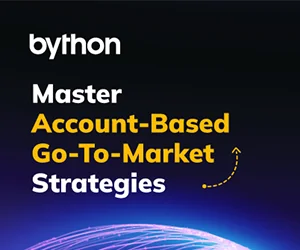Efficiency in trade and commerce is perhaps the most sought-after quality among customers nowadays. The notion of having everything within one location and at high speeds drives business in the modern world. And this is where embedded finance could be applied.
According to a projection by Lightyear Capital, the worldwide market for embedded finance will more than double between 2020 and 2025, from around $22.5 billion to approximately $230 billion. So, what does this technology entail? What is the meaning of embedded finance, and how does it impact the fintech ecosystem today?
Simply said, embedded finance or EmFi refers to the incorporation of a financial product within a non-financial client experience, journey, as well as platform. Let’s examine the topic in greater detail.
Defining Embedded Finance
Embedded finance (abbreviated as EmFi) is defined as the incorporation of financial services such as lending, payment processing, and insurance within the infrastructure of nonfinancial businesses without the need to reroute to conventional financial institutions.
In itself, the notion is not unique. Nonbanks have been providing financial services through private-label credit cards to retailers, supermarkets, and airlines for decades. These arrangements act as a conduit for the companies behind them to access end clients.
The integration of financial goods into digital interfaces that customers engage with every day is really what makes the next wave of embedded finance or EmFi extremely effective.
There are several options, including customer loyalty programs, digital wallets, accounting systems, and shopping cart services. For consumers and organizations using these interfaces, procuring financial services can become a logical extension of non-financial experiences, such as online shopping, employee scheduling, and inventory management.
What Caused the Rise of Embedded Finance?
Fundamental shifts in business, dealer and customer behavior, and technologies have aided the growth of embedded finance:
- Evolving business environments: The digitalization of commerce and business administration has vastly increased the potential for integrating finance into non-financial client interactions. Up to 33% of worldwide card spending now occurs online, compared to 50% in the United States, and a substantial proportion of small and medium-sized businesses depend on technological solutions for business management.
- Altering consumer behavior: In addition, when digital natives hit adulthood, they increased the number of consumers and companies eager to receive all financial services through digital platforms.
- Modifying the infrastructure of fintech: Open-banking innovation, backed by regulations in the European Union and market-driven adoption in the United States, has helped release latent demand by allowing third-party fintech providers access to customers’ banking data and even the ability to perform transactions on their behalf.
Embedded finance is expected to occur whenever a big proportion of consumers or enterprises have regular (sometimes daily) digital encounters with the operators of the digital platform — the “distributor” of embedded finance.
Embedded finance provides a solution for a nonbank corporation functioning as a distributor to improve the client experience and develop a new stream of income without incurring the costs involved with running a bank.
Retailers, business-software companies, internet marketplaces, and telecommunications corporations, among others, are well-positioned to provide embedded financing. In the previous year or two, embedded financial activity and innovation have been significant in all of these sectors, spurred further by the rise in online activity during the pandemic.
How Does Embedded Finance Work?
From a birds-eye viewpoint, the embedded financial ecosystem is comprised of four major participant categories:
- The embedder or the distributor, which is the user touchpoint
- The enabler, is the fintech firm enabling money movement, verification, data security, etc.
- The provider, or the bank, lender, or financial institution providing the financial service
- The end consumer of the goods and services of the marketplace
Obviously, the reality on the ground is not as straightforward as this list indicates. The effective application of embedded finance or EmFi in different global marketplaces has often included the overlap of roles and the donning of numerous hats by a single player.
For embedded finance to work, the supplier must collaborate with the enabler. They package their services as an API, or an application programming interface, which is a string of computer code that allows various software programs to communicate with one another.
The API is the distribution method for the services or products of any embedded financial provider.
To provide embedded financial products, an embedder or distributor must acquire accessibility to one or more APIs. This organization has two options. It may connect to a pre-built API, brand the product, and sell it as if it were it’s own. This is called white labeling.
Alternatively, it may utilize one or more APIs as starting points to develop a one-of-a-kind new service or product that it subsequently provides to consumers or starts selling to other companies. In this instance, the company also acts as a facilitator and supplies to a different distributor.
When the consumer interacts with the distributor, they actually make use of this entire pipeline of fintech and financial service offerings that are embedded in the final touchpoint (without even realizing it).
Embedded Finance Examples to Note
Embedded finance may take on many forms. The fundamental concept is to enable a non-financial company to link financial services via the use of APIs, without requiring the client to visit a third-party website.
An example of embedded finance is the integrated insurance instance presented at the beginning of the article. The emergence of “Buy Now, Pay Later” (BNPL) on online shopping platforms is another example. This model enables you to turn your entire purchase price into interest-free monthly payments. Additionally, there are systems that combine investing and trading services.
Here is a summary of the most prominent embedded finance or EmFi examples:
1. Embedded BNPL or payment in installments
Prior to the introduction of integrated finance technologies, consumers may visit a shop to purchase a product and make a deposit to hold the product. The store would keep it until the buyer could pay off the balance.
Now, businesses may provide BNPL services in which the client receives the goods immediately but pays for them in installments. This option is offered throughout the checkout process by finance companies like Afterpay.
2. Embedded payment interfaces
Embedded payments are perhaps the most prevalent sort of embedded financial products. Amazon, Uber, DoorDash, Walmart, and Instacart all support integrated payments, allowing users to place orders and make purchases within the same service.
Google Pay, Apple Pay, and Venmo are additional instances of integrated payment systems that allow users to store financial data, access various services, and execute transactions in a single location.
3. Embedded investments and trading
Examples of integrated investment companies include Robinhood, Acorns, as well as Cash App, which incorporate stock market investing. It is possible to buy, sell, and trade equities without ever exiting the app or interacting with an asset manager. They are not pureplay trading apps – most of these software platforms include tutorials, learning resources, chat, community, etc., in addition to EmFi.
Benefits of Embedded Finance
Using embedded finance solutions is beneficial for every stakeholder in the ecosystem (although it may pose regulatory complexities). Its key benefits include:
- Accelerate go-to-market for online businesses: Collaborating with a banking-as-a-service or payment provider minimizes complexities and saves time, allowing companies to deploy high-quality financial services offerings rapidly and cost-effectively.
- Improve product quality and user experience: If you are a non-financial business, integrating supplemental financial products into an existing user experience may give you a competitive advantage by allowing you to provide a more comprehensive and, therefore, more value-added offering.
- Strengthen relationships between financial service providers and customers: Embedded finance is a chance to enhance client connections by providing them with more versatility and utility while increasing incomes.
- Personalized offerings: Financial institutions may benefit from the distribution networks of digital platforms to gain access to a vast reservoir of borrower information that can be leveraged to provide prospective borrowers with customized financial solutions.
FaaS, or Fintech as a Service, is a comprehensive approach that enables API connections between third parties and FinTech systems. Embedded finance or EmFi covers both fintech and banks in order to incorporate financial services specifically into non-finance contexts. This truly democratizes our reach and use of next-gen financial products.




